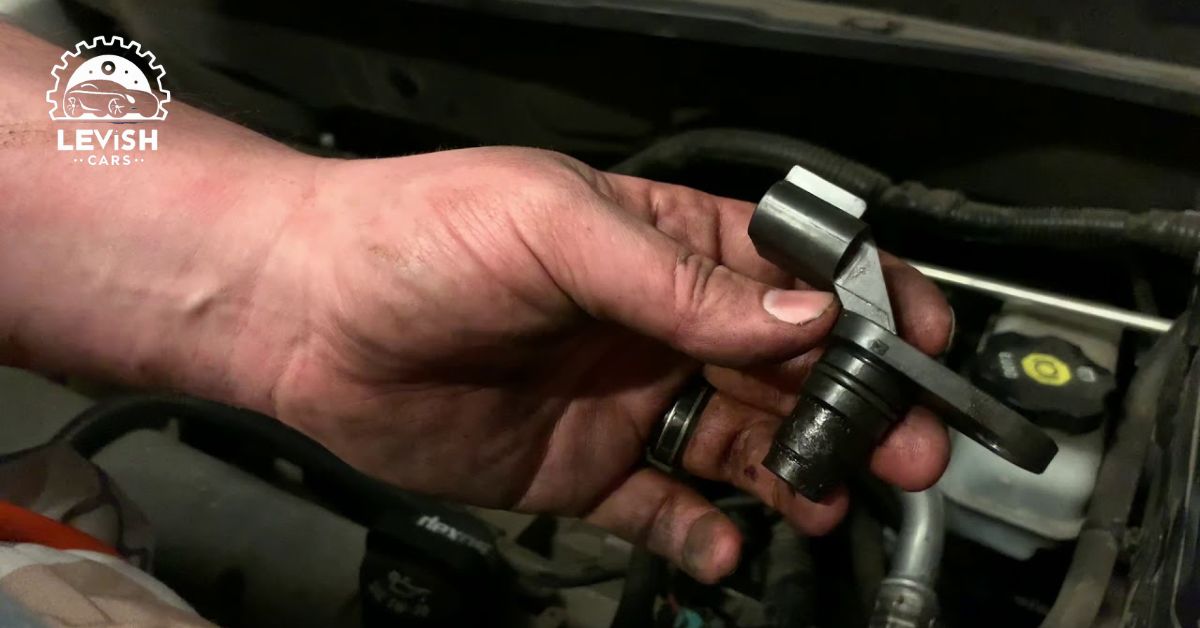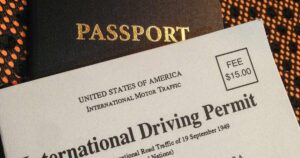The camshaft sensor is important. It monitors engine timing. Sometimes the sensor goes bad. Then the engine will not run right. The camshaft sensor needs to be replaced. After installing a new sensor, there are steps to follow.
The new sensor must be tested. Make sure the connection is good. Then reset any error codes. Test drive the car. Check that the engine runs smooth. Follow-up steps are important. This ensures the new camshaft sensor works. The car will run properly again.
What’s a Camshaft Sensor?
The camshaft sensor monitors camshaft position. It sends signals to the car’s computer. This information is used to control timing. Proper valve and ignition timing is important. This allows the engine to run smoothly. The cam sensor makes sure timing is right.
The camshaft sensor uses a syncing plate. As the camshaft spins, the plate pulses the sensor. This creates a signal showing exactly when the cam is opening and closing valves.
The computer uses this to time engine events. The camshaft sensor is essential for proper engine operation.
How to Check a Cam Sensor?
There are a few ways to check a camshaft sensor. First is to look for diagnostic trouble codes. Codes point to sensor issues. Next is to check live sensor data. Look for erratic readings from the sensor.
Also look for damaged wiring or connectors. Finally, measure sensor resistance. Compare to published specs. Out of range resistance indicates a bad sensor. Following these steps will diagnose a faulty camshaft sensor.
When testing a camshaft sensor, safety comes first. Carefully remove and inspect components. Use proper circuit testing methods. Confirm tests with repair manuals. Diagnosing the cam sensor properly will reveal if replacement is needed.
When to Replace the Camshaft Sensor?
The camshaft sensor should be replaced if faulty. Signs of a bad cam sensor are check engine lights, sensor codes, and engine issues. Starting problems, stalling, rough idle point to sensor failure. Trouble codes for the camshaft sensor indicate it needs repair.
Once diagnosed, the camshaft sensor must be replaced. This is done by consulting the repair manual. Safely remove the old sensor. Install the new sensor with care.
Ensure the connector is secure. Then test for proper operation. Replacing a confirmed faulty sensor restores normal engine performance.
What Are the Symptoms of a Bad Camshaft Sensor?
A bad camshaft sensor causes issues like: Check engine light, codes for cam sensor, poor acceleration, rough idle, misfires, trouble starting the car, stalling at stops, reduced power, and incorrect timing. Any of these indicate camshaft sensor failure.
The computer cannot properly time the engine without accurate sensor signals. This leads to many performance problems. Replacing the faulty sensor will solve these issues.
Illuminated Check Engine Light
The check engine light turning on points to problems. It often comes on when the camshaft sensor is bad. The computer sees an issue with the cam sensor signals. This triggers the check engine light to alert the driver.
Starting Difficulties
When the camshaft sensor is faulty, starting the engine may be hard. The computer needs the sensor signal to properly time spark and fuel. Without this, the engine will not start correctly. Difficulty starting is a sign of bad camshaft sensor.
Erratic Idle
A faulty camshaft sensor causes uneven idling. The engine RPM will surge up and down. This happens because the computer cannot correctly time ignition with the bad sensor signal. Erratic idle comes from the bad cam sensor.
Hesitation/Loss Of Power
The engine may hesitate or lack power when accelerating. This is due to incorrect fuel and timing from the camshaft sensor problem. The computer is unable to optimize performance, causing hesitation and lack of power.
Engine Misfires
Misfiring and sputtering as you drive are camshaft sensor symptoms. Without the sensor signal, the spark plugs fire at the wrong times. This results in misfires and poor combustion. Replacing the bad sensor will solve misfires.
Reduced Fuel Economy
Poor fuel mileage can happen from a faulty camshaft sensor. Incorrect timing causes inefficient fuel burn. This lowers gas mileage. Replacing the bad sensor restores proper timing and fuel economy.
Failed Emissions Test
The emissions test will not pass if the camshaft sensor is setting codes. The engine’s emissions are over legal limits due to the sensor problem. This causes an emissions failure until the sensor is replaced.
How to Replace a Camshaft Sensor?
Replacing the camshaft sensor starts with preparations. Locate the sensor in the engine bay. Disconnect the negative battery cable. Remove any wiring clips or brackets near the sensor.
When ready, detach the electrical connector from the sensor. Then loosen and remove the retaining bolt. Pull the sensor out of its mounting. Install the new sensor and tighten it down securely.
Reattach the connector properly. Reinstall any brackets moved. Reconnect battery cable when done. Replacing the camshaft sensor restores proper engine operation.
How to Clean a Camshaft Sensor?
Camshaft sensors can be cleaned carefully. Start by detaching the connector from the sensor. Then remove the sensor from its mounting. Clean away dirt and debris from sensor tip and wires using a rag. For heavy buildup, use electrical contact cleaner sprayed onto a cotton swab.
Gently wipe down the sensor contacts to avoid damage. Make sure areas are fully dry before reinstalling sensor. Reconnect the electrical connector securely. Cleaning the camshaft sensor contacts helps restore accurate signal transfer.
Do You Have to Disconnect Battery When Replacing Camshaft Sensor?
It is recommended to disconnect the battery before replacing the camshaft sensor. This allows the computer to reset and relearn the sensor signals. Some cars require this resetting step. Disconnecting battery also prevents accidental electrical shorts while working. Safety first when replacing the cam sensor.
What to Do After Replacing Camshaft Sensor?
After installing a new camshaft sensor, reconnect battery if disconnected. Clear any codes with an OBD scanner. Test drive the vehicle, allowing the computer to calibrate the sensor.
Check for proper engine performance. Recheck for codes after a few days. The new cam sensor may need further reset procedures. Perform all steps to confirm smooth operation.
Installation Verification
Carefully check that the new camshaft sensor is correctly installed. The connector should click when pushed in fully. Sensor bolts must be tightened to the specified torque. Visual inspection ensures proper mounting.
Reconnect the Battery
Once the new sensor is completely installed, reconnect the vehicle’s battery if it was disconnected. Attach battery cables to the proper terminals securely.
Reset/Relearn Procedure
Some vehicles require a reset or relearn procedure for the camshaft sensor. This allows the computer to detect the new sensor and adjust settings. Consult a repair manual on the proper steps.
Clear Any Fault Codes
Use an OBD2 scanner tool to clear any check engine light or error codes related to the camshaft sensor. This gives the computer a fresh start with new sensor readings.
Operational Test
Start the engine and let it run for a few minutes, checking for smooth operation. Listen for any misfires or rough idling that could indicate an issue with the new sensor.
Take a Test Drive
Test drive the vehicle. Accelerate through different speeds, listening and feeling for proper performance. Check for any hesitation, lack of power, or odd sounds.
Monitor Performance
Carefully monitor engine performance over the next few days. Rescan for codes after some driving to confirm the camshaft sensor is operating correctly with no faults present.
When to Reprogram a Camshaft Position Sensor?
The camshaft position sensor may need reprogramming. This initializes the sensor signals to the computer. Reprogramming is required if directed by a repair manual. It is done after installing a new camshaft sensor. Also if sensor replacement does not fix issues.
Start by connecting a scan tool. Enter the sensor programming mode. Follow prompts to configure the sensor. Complete all steps as stated in the instructions. Reprogramming is critical to restore accurate camshaft sensor operation.
When Not to Reprogram the Camshaft Position Sensor?
Do not reprogram the camshaft sensor if not specified. Many vehicles automatically detect the new sensor. Unnecessary reprogramming can cause problems. Only do so when repair procedures state it is required.
Avoid reprogramming an original sensor being reinstalled. Also if swapping to a known good used sensor. Reprogramming is for new sensors paired with the vehicle computer the first time. Improper reprogramming will make issues worse.
What Causes a Camshaft Sensor to Go Out?
There are several reasons a camshaft sensor can fail: Age and extended mileage lead to worn components. Oil leaks cause engine oil to coat the sensor. Dirt, debris, and carbon buildup affect the sensor tip. Electrical faults or shorts damage the sensor wiring. Extreme engine heat and vibration also damage sensors over time.
Routine maintenance and prompt repairs help maximize sensor life. But eventual failure of the camshaft sensor is unavoidable with enough miles.
How Can I Prevent Camshaft Sensor Failure?
To help prevent premature failure: Fix any engine oil leaks and have regular oil changes. Maintain clean engine oil. Inspect sensor periodically for dirt buildup and clean if needed. Check wires for any rubbing or damage. Make sure all grounds and connections are secure.
Follow the maintenance schedule for inspecting and replacing aging sensors. Take care of engine issues quickly before extra damage occurs. Proper car care promotes longer camshaft sensor life. But they still wear out over time.
Frequently Asked Questions
Why Won’t My Car Start After Replacing Camshaft Sensor?
If the car won’t start after replacing the camshaft sensor, it could be caused by an improper installation, faulty wiring connections, or a still malfunctioning sensor. Double check all connections and ensure the new sensor is securely mounted.
Does Camshaft Sensor Affect Starting?
Yes, the camshaft sensor provides key timing signals for fuel and ignition. If this signal is missing or erratic, it can prevent the engine from starting properly.
What Code Will a Bad Camshaft Sensor Throw?
A bad camshaft sensor will often trigger P0340 – Camshaft Position Sensor Circuit Malfunction. It may also set timing related codes like P0013, P0341, P0346.
Will a Camshaft Sensor Always Throw a Code?
Not always. Occasionally a camshaft sensor can become erratic or out of specs without setting a specific trouble code. This can still cause issues.
Is There a Way to Test a Camshaft Sensor?
You can test a camshaft sensor by checking its resistance, power input, and output signals. Compare voltage readings to published specs for that sensor.
What May Cause a Vehicle to Lose the Cam Crank Sync Signal?
Worn timing belt or chain, bad crank/cam sensors, misaligned timing, and electrical issues can cause the cam/crank sync signal to be lost.
Can a Bad Camshaft Sensor Drain Battery?
It’s unlikely a bad cam sensor alone would drain the battery. But excessive cranking from a no start condition caused by the cam sensor can run down the battery over time.
Will Camshaft Sensor Fail Inspection?
Yes, a bad camshaft sensor that is setting codes, has out of range signals, or prevents smooth running will cause a vehicle to fail inspection. It must be repaired.
What Does a Bad Camshaft Position Sensor Sound Like?
Symptoms of a bad camshaft sensor include rough idle, misfires, reduced power, and trouble starting. The engine may have an erratic or uneven sound.
Final Thoughts
Replacing the camshaft sensor is only part of the repair. Important steps come after installing the new sensor. First, verify the sensor is correctly mounted. Reconnect battery if disconnected. Some vehicles need sensor reprogramming by a shop.
Clear any engine codes from the bad sensor using a code scanner. Test drive the vehicle to allow the computer to detect the new sensor. Monitor performance closely in the following days. Recheck for codes and proper operation.
The engine computer may take some driving cycles to fully adapt. Be patient but watch for remaining issues. Proper follow-up ensures the new camshaft sensor fixes the problems. The car will run smoothly again.

Hey there! I have 5 years of experienced repairing all makes and models. Specializes in engine diagnostics, brake repair, electrical systems, and teaching DIY maintenance tips. Passionate about keeping cars running safely.








